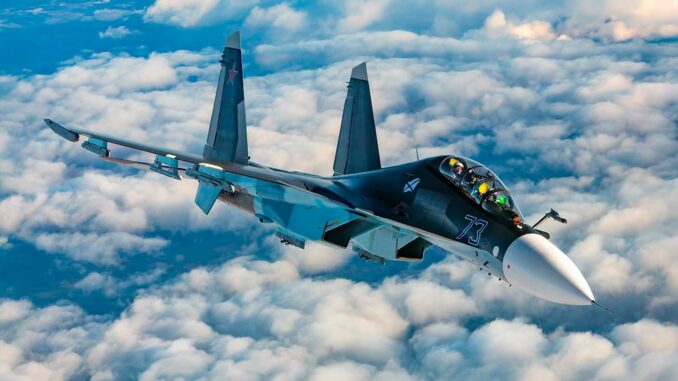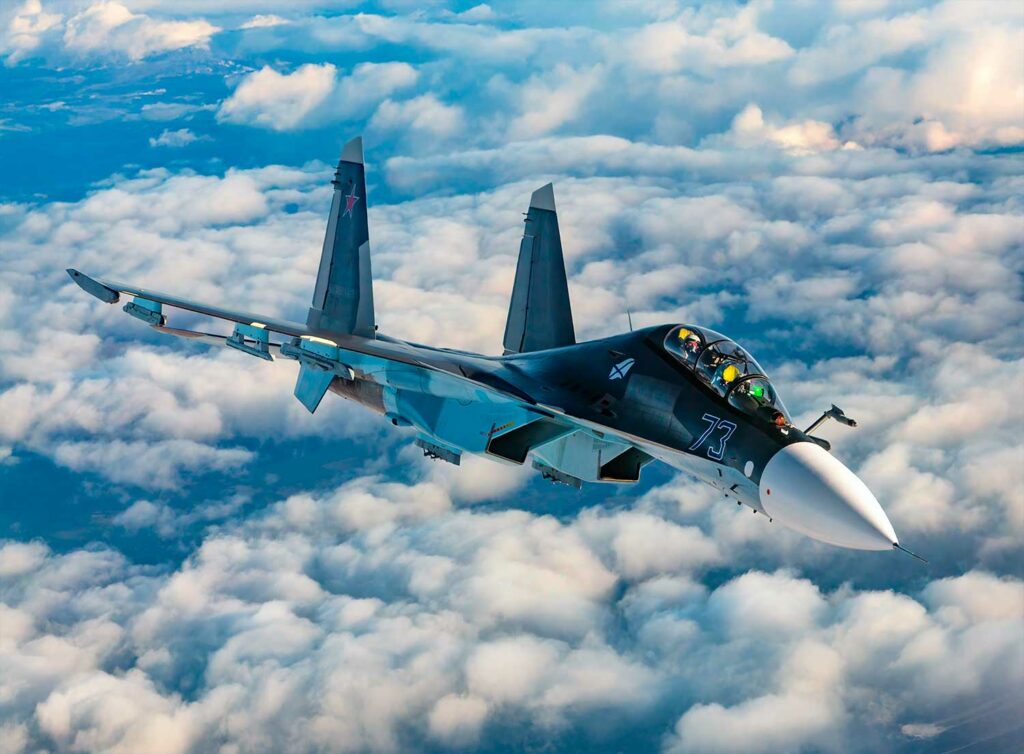
On August 10, 2025, a Ukrainian naval drone shot down a Russian Su-30 in the Black Sea for the first time ever, redefining air combat tactics.
The unprecedented event of August 10, 2025
On August 10, 2025, Ukraine claimed to have shot down a Russian Su-30 fighter jet using a military drone operating in the Black Sea. This act constitutes the first time in history that a drone has shot down a fighter jet. The aircraft, a Russian SU-30, was destroyed under circumstances that remain partially confidential, but the impact of this operation already goes beyond the tactical: it symbolizes an evolution in air combat tactics based on the growing use of drones in conflict, particularly modern air combat.
The naval drone and its technical capabilities
The drone used appears to be derived from the MAGURA V5 or MAGURA V7 series, designed by SpetsTechnoExport. The MAGURA V5, 5.5 m long, has a cruising speed of 22 knots (≈ 41 km/h) and a maximum speed of 42 knots (≈ 78 km/h). It can fly up to 720 km (≈ 450 miles) with a payload of up to 1,000 kg, including surveillance systems, explosive charges (320 kg) or guided anti-aircraft missiles (R-73).
The upgraded version, MAGURA V7, is approximately 8 m long and has two missile launchers: capable of firing AIM-9M or AIM-9X Sidewinders ([Wikipedia][1]). According to the GUR (Ukrainian military intelligence), AIM-9X or R-73 missiles were used to shoot down the Su-30 approximately 50 km west of Novorossiysk, a strike attributed to Ukrainian Group 13.
Operational context and strategic significance
The Russian Su-30, a multi-role fighter estimated to be worth nearly $50 million, plays a central role in air superiority in the Russian-Ukrainian conflict. Its destruction by a naval drone marks a lasting turning point in Ukrainian military strategy and Ukrainian air defense.
Previous Ukrainian maritime drone operations, such as those involving the MAGURA V5, had already sunk Russian ships and shot down a Mil Mi-8 helicopter in late 2024. But the downing of a Russian Su-30 fighter jet represents an unprecedented advance in the use of drones in aerial warfare.
The location of the attack, the Black Sea, is no longer just a naval theater, but is becoming an air combat zone. The drone strike in the Black Sea extends Ukraine’s offensive reach beyond its coastline, threatening not only enemy fleets but also enemy aircraft over the water.

Technical aspects and tactical relevance
Range and accuracy
The drone’s 720 km range and guided anti-aircraft missile equipment make it capable of targeted long-range strikes with high accuracy, while remaining out of range of conventional ship defenses.
Maneuverability and autonomy
With a maximum speed of 42 knots (≈ 78 km/h) and automated systems (GNSS, inertial navigation system, visual navigation), the MAGURA V5/V7 are designed to operate autonomously, minimizing human risk.
Enemy saturation and surprise
The strike exploited tactical surprise, striking on the high seas, where conventional radar detection is less reliable. In addition, the use of multiple drones could overwhelm enemy defenses.
Impact on the war in Ukraine and the future of aviation
This world first of a drone shooting down a fighter jet marks a turning point in the war in Ukraine. It demonstrates the Ukrainian forces’ ability to innovate and adapt modern air weapons to their needs, while redefining the scope of modern air combat.
On a geopolitical level, this event could prompt a reassessment of air defense budgets, which will now have to include specialized systems to counter these naval threats.
Finally, for Ukraine, this is a success that strengthens its technological and strategic position. It could inspire other states in conflict to develop similar capabilities.
War Wings Daily is an independant magazine.